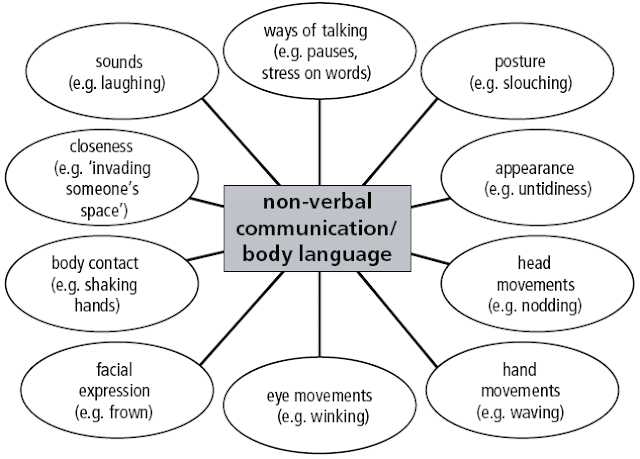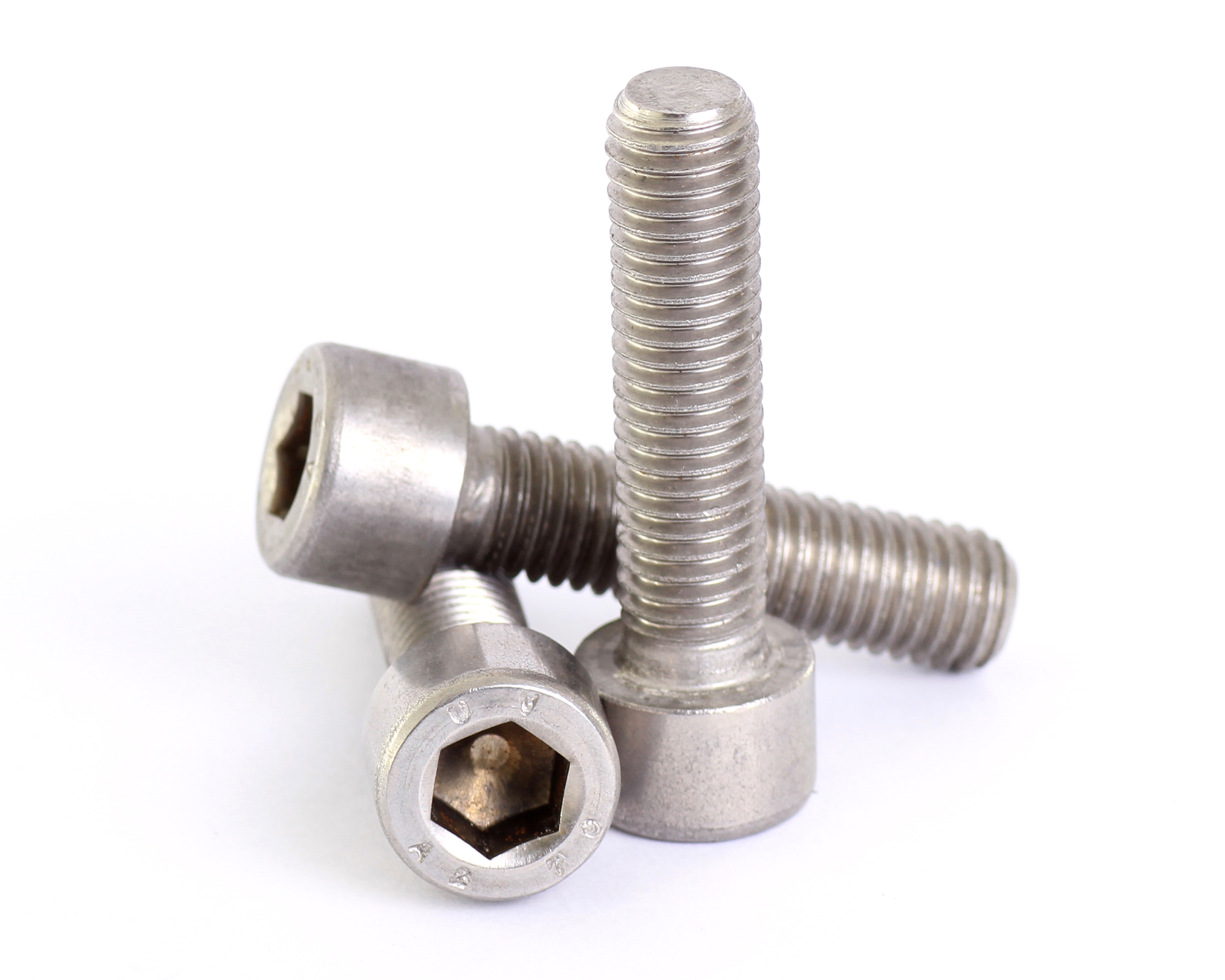Important dams in India
Brief details of the important dams in India such as the Tehri Dam, Bhakra Dam, Hirakud Dam, Indira Sagar Dam, Nagarjuna Sagar dam, and Mettur dam is given below:
The Tehri Dam at Tehri in Uttarakhand which lies on the Bhagirathi River in India holds the rank of highest dam in India and one of the tallest dams in World. The Tehri Dam was built in the year 2006 with 1000 MW of hydro power generation capacity. It’s water is also used in the Municipal water supply and in irrigation works in the state of Uttarakhand. The Tehri dam is a 855 ft high rock and its length is 1886 ft, crest width of 66 ft and base width of 3701 ft which creates 2.6 cubic km of reservoir.
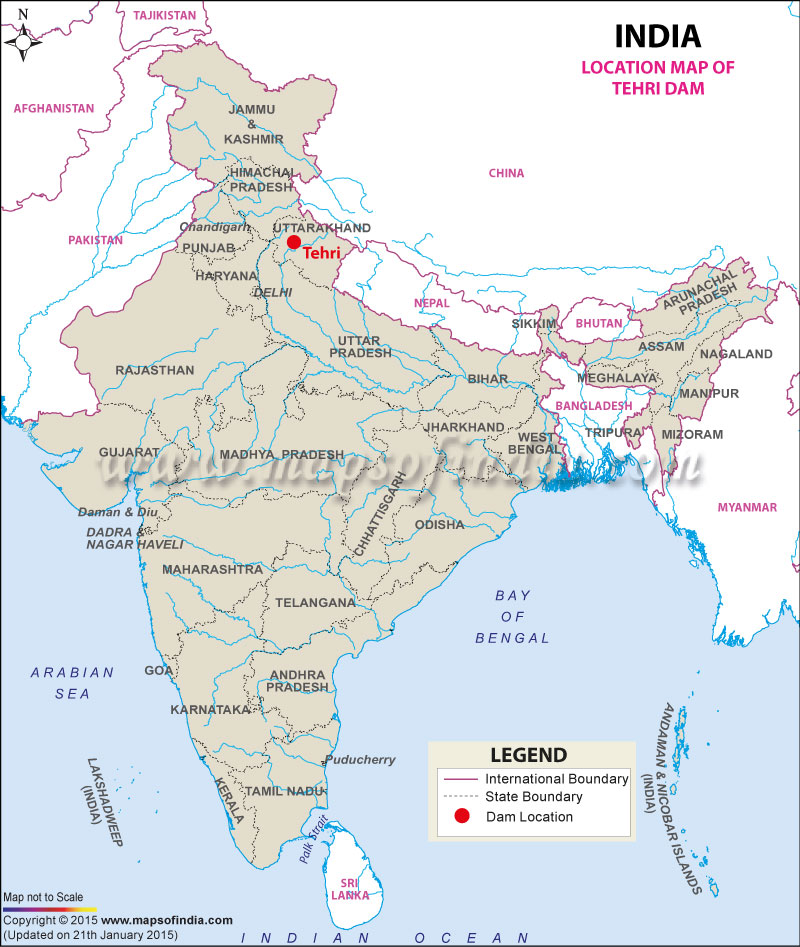

The Bhakra dam is across the Sutlej River. It was described as “New Temple of Resurgent India” by Pandit Jawaharlal Nehru who was the first prime minister of independent India. The Bhakra Dam is in the village of Bhakra in Himachal Pradesh of India. It was built in the year 1963. There is an another dam called Nangal in the downstream of Bhakra and both were called as Bhakra Nangal Dam. The Bhakra dam is at 740 ft tall which is next to the Tehri Dam, so it is the 2nd highest dam in India. The Bhakra dam is also the 2nd largest reservoir with capacity of 9.34 billion M3 after the Indira Sagar Dam in the state of Madhya Pradesh.
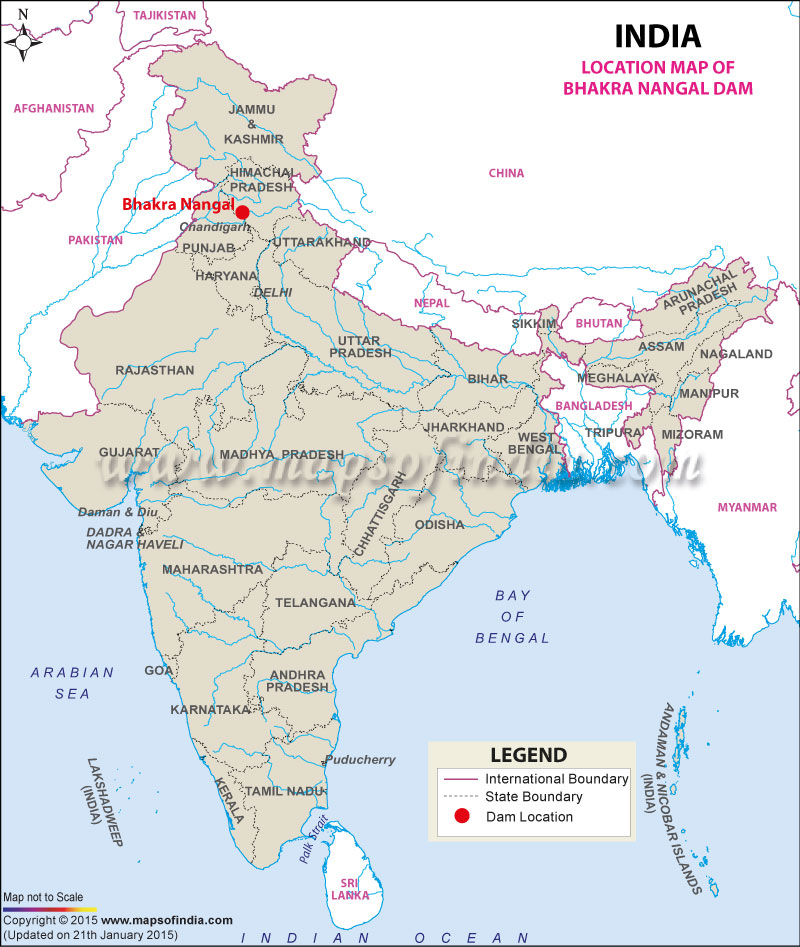

The Hirakud Dam was built in the year 1953 across the Mahanadi River in Hirakud district in Odisha. The Hirakud Dam was build for multipurpose use as Irrigation, Hydro Electricity generation etc. This dam has the installed hydro-power generation capacity of 307.5 MW. This dam is also saves the entire Mahanadi delta from flood. Hirakud dam’s length is 25.8 KM with an artificial lake of 743 sq K.M. which is the Asia’s biggest artificial lake.
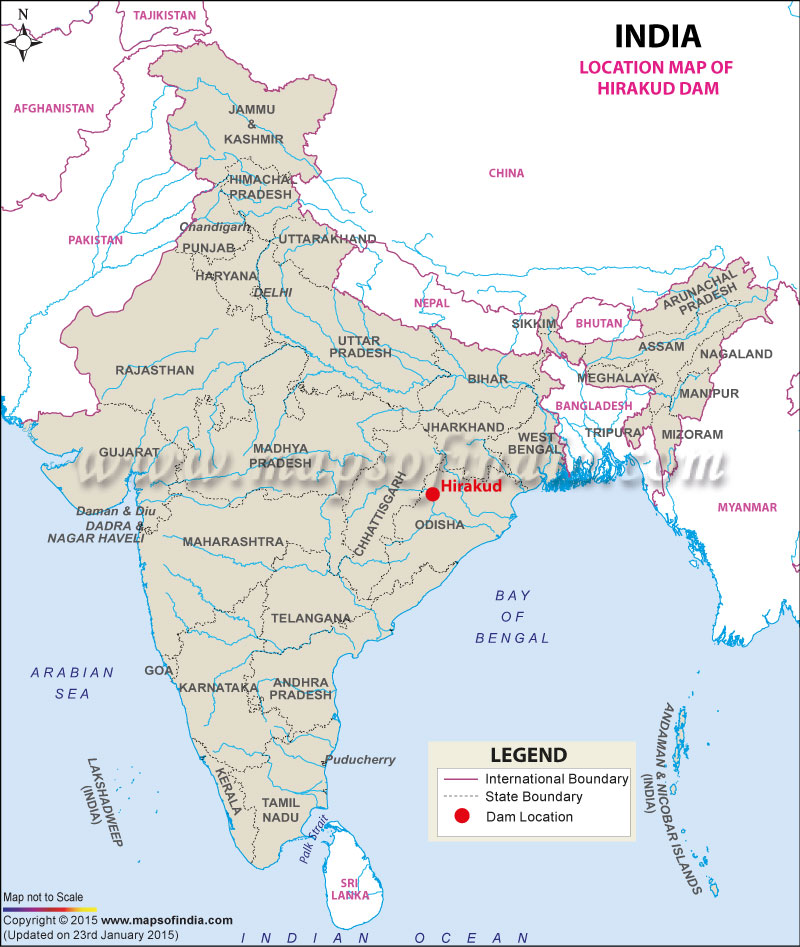

The Indirasagar Dam is built accross the Narmada river which is the India’s 5th largest river, at Narmadanagar in the district of Khandwa in Madhya Pradesh, was commissioned in the year 2005. This dam holds the 1st position as largest reservoir with installed capacity of 12.22 billion M3 in India. The Indirasagar dam has 1000 MW of hydro power installed capacity. This dam serves as a multipurpose dam like Hirakud, Bhakra Nangal dam etc.
The Nagarjuna Sagar dam was one of the earliest large Infra-projects which is built across Krishna River in Andhra Pradesh in India. The Nagarjuna Sagar dam is 150 meter tall and 1600 meter long which has the installed capacity of 816 MW of Hydro-electricity in 8 power generation units. This dam has water reservoir capacity of 11472 million M3.
The Mettur dam which was one of the oldest and largest dams was built in the year 1934 in India. This dam built across the Kaveri River in Tamilnadu state. Mettur dam is situated at Salem district in Tamilnadu. The Mettur dam has the reservoir capacity of 94.3 billion cubic feet at height of 120 ft and length is at 1700 meters. The Mettur dam is utilised mainly in farm land irrigation works in the parts of Namakkal, Salem, Tiruchirapalli and district of Thanjavur.





